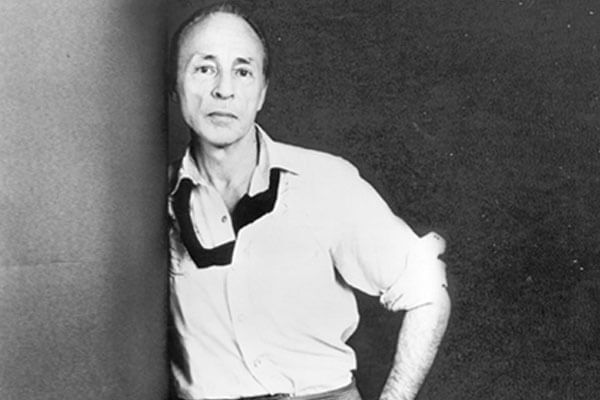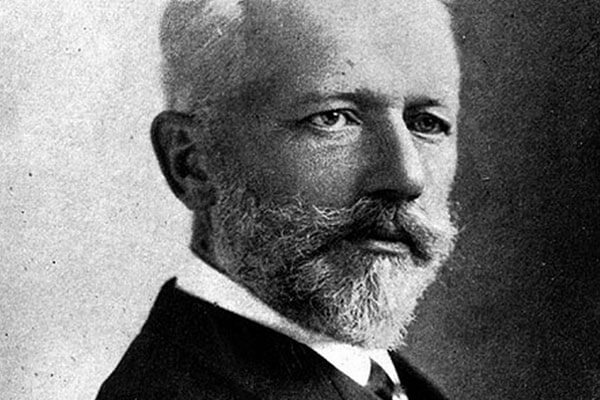
Born in St. Petersburg, Russia, George Balanchine (1904-1983) is regarded as the foremost contemporary choreographer in the world of ballet. He came to the United States in late 1933, at the age of 29, accepting the invitation of the young American arts patron Lincoln Kirstein (1907-96), whose great passions included the dream of creating a ballet company in America. At Balanchine’s behest, Kirstein was also prepared to support the formation of an American academy of ballet that would eventually rival the long-established schools of Europe.
This was the School of American Ballet, founded in 1934, the first product of the Balanchine-Kirstein collaboration. Several ballet companies directed by the two were created and dissolved in the years that followed, while Balanchine found other outlets for his choreography. Eventually, with a performance on October 11, 1948, the New York City Ballet was born. Balanchine served as its ballet master and principal choreographer from 1948 until his death in 1983.
Balanchine’s more than 400 dance works include Serenade (1934), Concerto Barocco(1941), Le Palais de Cristal, later renamed Symphony in C (1947), Orpheus (1948), The Nutcracker (1954), Agon (1957), Symphony in Three Movements (1972), Stravinsky Violin Concerto (1972), Vienna Waltzes (1977), Ballo della Regina (1978), and Mozartiana (1981). His final ballet, a new version of Stravinsky’s Variations for Orchestra, was created in 1982.
He also choreographed for films, operas, revues, and musicals. Among his best-known dances for the stage is Slaughter on Tenth Avenue, originally created for Broadway’s On Your Toes (1936). The musical was later made into a movie.
A major artistic figure of the twentieth century, Balanchine revolutionized the look of classical ballet. Taking classicism as his base, he heightened, quickened, expanded, streamlined, and even inverted the fundamentals of the 400-year-old language of academic dance. This had an inestimable influence on the growth of dance in America. Although at first his style seemed particularly suited to the energy and speed of American dancers, especially those he trained, his ballets are now performed by all the major classical ballet companies throughout the world.

Peter Ilyich Tchaikovsky, born in Kamsko Votkinsk in the district of Viatka on May 7, 1840, was the son of a mining engineer. Although he began piano instruction at the age of five and showed signs of musical precociousness, a musical career was not anticipated at that time. In 1850, he was enrolled in the preparatory class of the School of Jurisprudence when his family moved to St. Petersburg. He was admitted to the School of Jurisprudence in 1852, and while he was still a student there, he composed a canzonetta that became his first published work. In 1859, he completed his course of study and took a post as a clerk in the Ministry of Justice, but he continued to pursue musical studies, including voice, thorough bass and composition. He resigned from his post in l863 and became a full-time student at the St. Petersburg Conservatory, directed by Anton Rubinstein. It was during this period that he made his debut as a conductor and composed The Storm, his only student composition to be heard with any frequency today. In it, he already exhibited stylistic elements prominent in his later works, including the influence of Russian folk-melody, a command of Western compositional techniques and a flair for brilliant orchestration. Even before his graduation in 1865, he was offered a position as teacher of harmony at what was to become the Moscow Conservatory.
In 1866, he moved to Moscow. There he came under the influence of Anton’s brother Nikolai Rubinstein and met Peter Jurgenson, who would eventually become his publisher. His First Symphony, begun in 1866, proved to be a difficult and laborious exercise for Tchaikovsky, who found the structural demands of the symphonic sonata form incompatible with his own style. It was not performed until 1869, but it was well received. His began first opera, Voyevoda, in 1867, the year in which he met Berlioz and Balakirev, leader of the nationalistic movement in Russian music. Balakirev conducted the first St. Petersburg performance of Tchaikovsky‚ symphonic fantasia Fatum, composed in 1868. Tchaikovsky later destroyed the work, as he would several others, but it was eventually reconstructed. Balakirev’s influence was also felt in Tchaikovsky‚Äôs first masterpiece, Romeo and Juliet, which he rewrote several times at Balakirev‚ suggestion. From 1870 to 1874, Tchaikovsky became increasingly interested in nationalistic music, although his conservatory training and familiarity with Western techniques kept him outside the circle of ‚ÄúThe Mighty Five‚Äù (Balakirev, Cui, Borodin, Mussorgsky and Rimsky-Korsakov). His nationalistic tendencies came to a peak with the opera Vakula the Smith, first staged in 1876, by which time his infatuation with nationalism in music had declined. He wrote his first music for solo instrument and orchestra from 1874 to 1877, including his celebrated First Piano Concerto (1875), and in 1875‚Äì76 composed his first ballet, Swan Lake. The first performance in 1877 was considered a failure, based less upon Tchaikovsky’s score (which was severely cut and further compromised with interpolations by other composers) than by a poor performance and mediocre physical production. Swan Lake was later revived with new choreography by Petipa and Ivanov in 1895, at which time it was recognized as a masterpiece of the ballet repertoire. Around the end of 1876, Tchaikovsky began to receive financial support from a wealthy widow, Nadezhda von Meck, who was to remain his devoted patroness for the next 14 years. With a new found financial security, Tchaikovsky embarked upon a period of incredible musical fecundity, producing such cornerstones of the international repertoire as his Fourth Symphony, the violin concerto and the opera Eugene Onegin. Most of his compositions from the years 1878‚Äì84 have not proved as enduring, although his stature in Russia continued to grow, as exemplified by two events in 1884: his opera Mazeppa was given concurrent productions in St. Petersburg and Mosocw and he was awarded the Order of St. Vladimir by the Tsar. In 1887, Tchaikovsky undertook his first foreign tour as a conductor, during which he met such notables as Brahms and Grieg. It was almost immediately after composing his Fifth Symphony in 1888 that he began work on his second ballet, The Sleeping Beauty. The work was given an elaborate premiere and was well received, but the public reaction did not meet the expectations of the composer, choreographer (Petipa) and designer-impresario (Vsevolozhsky), and it was to be some years before the work was recognized as one of the pinnacles of classical ballet. Tchaikovsky went on without pause to compose the opera The Queen of Spades, which received a successful premiere in 1890 and, along with Eugene Onegin, became an international repertory item. Its success brought about a commission from the Imperial Theatre for two one-act works, the opera Iolanta and the ballet The Nutcracker, one of his most enduringly popular works despite its disappointing reception at its 1892 premiere. Tchaikovsky‚Äôs Sixth Symphony, his most profoundly pessimistic work, was first performed October 28, 1893. Nine days later, he died. His death is universally considered to have been a suicide, but the circumstances leading to it have become a musicological controversy that is yet to be resolved. Once considered by his contemporaries to be too Western in his style, Tchaikovsky was later lionized by Igor Stravinsky as the most Russian of Russian composers. His greatest strength, his incomparable gift for melody, was also responsible for his difficulty in composing within the structures of the German school of composition, and his blatant emotionalism has alienated some commentators. Nonetheless, he is today one of the most popular of all composers, and he created masterpieces in every genre. His music seems uniquely suited to ballet, with its inexhaustible stream of melody, an instinctive sense of movement considered ideal for the human body, and an irresistible rhythmic pulse and brilliant orchestration. It is no coincidence that all three of his ballets are firmly entrenched in the international repertoire.
The Nutcracker is Peter Horne’s favorite classic of the ballet repertoire. Philadelphia Ballet’s world premiere production marked Mr. Horne’s fifth design of this piece, always finding new ways to illustrate this wonderful story ballet. In 2005, Mr. Horne designed a Nutcracker for Washington Ballet following his productions for Atlanta Ballet, Ballet Met, and Les Grands Ballets. Other notable ballet designs include Scheherazade, Casse Noisette and Coppélia for Montreal and Skeleton Clock for Houston Ballet. As the assistant to Maurice Sendak, Mr. Horne was part of the creation of The Nutcracker for Pacific Northwest Ballet, which later became a movie. After many years working in the opera world as a designer, production and technical director for Houston Grand Opera, the Canadian Opera Company and the Glyndebourne Festival in England, Mr. Horne has now retired to the South Coast of England near Rye, where he will focus on painting, designing for the stage, and gardening.
Judanna Lynn began her career as a ballet dancer and spent nine years with the San Francisco Opera Ballet before moving to New York City to design costumes at the encouragement of Ming Cho Lee. Ms. Lynn has designed costumes for most major dance companies and choreographers in the United States, including several Philadelphia Ballet productions for works by Benjamin Harkarvy, Peter Martins, Jeffrey Gribler, Matthew Neenan, and Kirk Peterson. She created over 190 costumes for the Company’s world premiere production of George Balanchine’s The Nutcracker® in 2007.
Ms. Lynn has worked with New York City Ballet, San Francisco Ballet, the Alvin Ailey American Dance Theater, Ballet West, Milwaukee Ballet, BalletMet, The Parsons Dance Company, Hubbard Street Dance Chicago, and River North Chicago Dance Company, and the Atlanta, Boston, Washington, Pacific Northwest, Carolina, and Pittsburgh Ballet Companies. She was also the creative force behind the costuming for Houston Ballet’s productions of Ben Stevenson’s Don Quixote, Dracula, and Cleopatra. International companies have included the Ballet de Santiago and the Bulgarian National Ballet. She also created the costumes for the Festival of the Lion King show at Hong Kong Disneyland.
Ms. Lynn has served as the Resident Designer at The Juilliard School and is a painter whose work has been shown at the Rizzoli and Miniatura Galleries in New York City and at the Philadelphia Museum of Fine Art.
Les Dickert designs for a diverse range of live performance, spanning contemporary and Shakespearean theater, modern dance, classical ballet, and international performance art. Recent projects include The Concert (Finnish National Ballet), Giselle (Tulsa Ballet) and The Crucible (Bedlam). Other dance work includes White Oak Dance Project, San Francisco Ballet, Boston Ballet, Miami City Ballet, Tulsa Ballet, Joffrey Ballet. International: Centre Pompidou, La Scala, Le Lovre, and the National Ballets of England, Denmark, Australia, Belgium, Canada and Russia. Mr. Dickert is a graduate of the Yale School of Drama.
Sasha Anistratova is a freelance lighting designer based in Philadelphia, where she earned her BFA from the University of the Arts. She has created a number of works from theatre to dance in the Philadelphia area. She is currently creating and working on neon murals throughout Philadelphia, Toronto, and Dartmouth, Nova Scotia. Her works local can be seen at Electric Street, at Percy Street, and the Glenside Station Underpass. She has been an assistant light designer for Philadelphia Ballet, Ballet X, Walnut Street Theatre, Opera Philadelphia, and The Philadelphia Orchestra.